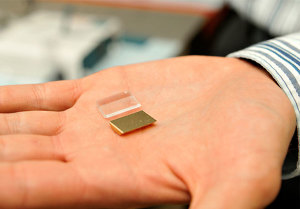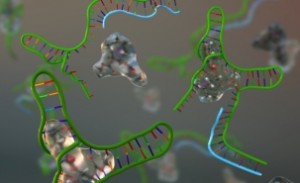The Brain research, ethics, and nanotechnology (part one of five) May 19, 2014 post kicked off a series titled ‘Brains, prostheses, nanotechnology, and human enhancement’ which brings together a number of developments in the worlds of neuroscience*, prosthetics, and, incidentally, nanotechnology in the field of interest called human enhancement. Parts one through four are an attempt to draw together a number of new developments, mostly in the US and in Europe. Due to my language skills which extend to English and, more tenuously, French, I can’t provide a more ‘global perspective’. Part five features a summary.
Before further discussing the US Presidential Commission for the Study of Bioethical Issues ‘brain’ meetings mentioned in part one, I have some background information.
The US launched its self-explanatory BRAIN (Brain Research through Advancing Innovative Neurotechnologies) initiative (originally called BAM; Brain Activity Map) in 2013. (You can find more about the history and details in this Wikipedia entry.)
From the beginning there has been discussion about how nanotechnology will be of fundamental use in the US BRAIN initiative and the European Union’s 10 year Human Brain Project (there’s more about that in my Jan. 28, 2013 posting). There’s also a 2013 book (Nanotechnology, the Brain, and the Future) from Springer, which, according to the table of contents, presents an exciting (to me) range of ideas about nanotechnology and brain research,
I. Introduction and key resources
1. Nanotechnology, the brain, and the future: Anticipatory governance via end-to-end real-time technology assessment by Jason Scott Robert, Ira Bennett, and Clark A. Miller
2. The complex cognitive systems manifesto by Richard P. W. Loosemore
3. Analysis of bibliometric data for research at the intersection of nanotechnology and neuroscience by Christina Nulle, Clark A. Miller, Harmeet Singh, and Alan Porter
4. Public attitudes toward nanotechnology-enabled human enhancement in the United States by Sean Hays, Michael Cobb, and Clark A. Miller
5. U.S. news coverage of neuroscience nanotechnology: How U.S. newspapers have covered neuroscience nanotechnology during the last decade by Doo-Hun Choi, Anthony Dudo, and Dietram Scheufele
6. Nanoethics and the brain by Valerye Milleson
7. Nanotechnology and religion: A dialogue by Tobie Milford
II. Brain repair
8. The age of neuroelectronics by Adam Keiper
9. Cochlear implants and Deaf culture by Derrick Anderson
10. Healing the blind: Attitudes of blind people toward technologies to cure blindness by Arielle Silverman
11. Ethical, legal and social aspects of brain-implants using nano-scale materials and techniques by Francois Berger et al.
12. Nanotechnology, the brain, and personal identity by Stephanie Naufel
III. Brain enhancement
13. Narratives of intelligence: the sociotechnical context of cognitive enhancement by Sean Hays
14. Towards responsible use of cognitive-enhancing drugs by the healthy by Henry T. Greeley et al.
15. The opposite of human enhancement: Nanotechnology and the blind chicken debate by Paul B. Thompson
16. Anticipatory governance of human enhancement: The National Citizens’ Technology Forum by Patrick Hamlett, Michael Cobb, and David Guston
a. Arizona site report
b. California site report
c. Colorado site reportd. Georgia site report
e. New Hampshire site report
f. Wisconsin site report
IV. Brain damage
17. A review of nanoparticle functionality and toxicity on the central nervous system by Yang et al.
18. Recommendations for a municipal health and safety policy for nanomaterials: A Report to the City of Cambridge City Manager by Sam Lipson
19. Museum of Science Nanotechnology Forum lets participants be the judge by Mark Griffin
20. Nanotechnology policy and citizen engagement in Cambridge, Massachusetts: Local reflexive governance by Shannon Conley
Thanks to David Bruggeman’s May 13, 2014 posting on his Pasco Phronesis blog, I stumbled across both a future meeting notice and documentation of the Feb. 2014 meeting of the Presidential Commission for the Study of Bioethical Issues (Note: Links have been removed),
Continuing from its last meeting (in February 2014), the Presidential Commission for the Study of Bioethical Issues will continue working on the BRAIN (Brain Research through Advancing Innovative Neurotechnologies) Initiative in its June 9-10 meeting in Atlanta, Georgia. An agenda is still forthcoming, …
…
In other developments, Commission staff are apparently going to examine some efforts to engage bioethical issues through plays. I’d be very excited to see some of this happen during a Commission meeting, but any little bit is interesting. The authors of these plays, Karen H. Rothenburg and Lynn W. Bush, have published excerpts in their book The Drama of DNA: Narrative Genomics. …
The Commission also has a YouTube channel …
Integrating a theatrical experience into the reams of public engagement exercises that technologies such as stem cell, GMO (genetically modified organisms), nanotechnology, etc. tend to spawn seems a delightful idea.
Interestingly, the meeting in June 2014 will coincide with the book’s release date. I dug further and found these snippets of information. The book is being published by Oxford University Press and is available in both paperback and e-book formats. The authors are not playwrights, as one might assume. From the Author Information page,
Lynn Bush, PhD, MS, MA is on the faculty of Pediatric Clinical Genetics at Columbia University Medical Center, a faculty associate at their Center for Bioethics, and serves as an ethicist on pediatric and genomic advisory committees for numerous academic medical centers and professional organizations. Dr. Bush has an interdisciplinary graduate background in clinical and developmental psychology, bioethics, genomics, public health, and neuroscience that informs her research, writing, and teaching on the ethical, psychological, and policy challenges of genomic medicine and clinical research with children, and prenatal-newborn screening and sequencing.
Karen H. Rothenberg, JD, MPA serves as Senior Advisor on Genomics and Society to the Director, National Human Genome Research Institute and Visiting Scholar, Department of Bioethics, Clinical Center, National Institutes of Health. She is the Marjorie Cook Professor of Law, Founding Director, Law & Health Care Program and former Dean at the University of Maryland Francis King Carey School of Law and Visiting Professor, Johns Hopkins Berman Institute of Bioethics. Professor Rothenberg has served as Chair of the Maryland Stem Cell Research Commission, President of the American Society of Law, Medicine and Ethics, and has been on many NIH expert committees, including the NIH Recombinant DNA Advisory Committee.
It is possible to get a table of contents for the book but I notice not a single playwright is mentioned in any of the promotional material for the book. While I like the idea in principle, it seems a bit odd and suggests that these are purpose-written plays. I have not had good experiences with purpose-written plays which tend to be didactic and dull, especially when they’re not devised by a professional storyteller.
You can find out more about the upcoming ‘bioethics’ June 9 – 10, 2014 meeting here. As for the Feb. 10 – 11, 2014 meeting, the Brain research, ethics, and nanotechnology (part one of five) May 19, 2014 post featured Barbara Herr Harthorn’s (director of the Center for Nanotechnology in Society at the University of California at Santa Barbara) participation only.
It turns out, there are some Canadian tidbits. From the Meeting Sixteen: Feb. 10-11, 2014 webcasts page, (each presenter is featured in their own webcast of approximately 11 mins.)
Timothy Caulfield, LL.M., F.R.S.C., F.C.A.H.S.
Canada Research Chair in Health Law and Policy
Professor in the Faculty of Law
and the School of Public Health
University of Alberta
Eric Racine, Ph.D.
Director, Neuroethics Research Unit
Associate Research Professor
Institut de Recherches Cliniques de Montréal
Associate Research Professor,
Department of Medicine
Université de Montréal
Adjunct Professor, Department of Medicine and Department of Neurology and Neurosurgery,
McGill University
It was a surprise to see a couple of Canucks listed as presenters and I’m grateful that the Presidential Commission for the Study of Bioethical Issues is so generous with information. in addition to the webcasts, there is the Federal Register Notice of the meeting, an agenda, transcripts, and presentation materials. By the way, Caulfield discussed hype and Racine discussed public understanding of science with regard to neuroscience both fitting into the overall theme of communication. I’ll have to look more thoroughly but it seems to me there’s no mention of pop culture as a means of communicating about science and technology.
Links to other posts in the Brains, prostheses, nanotechnology, and human enhancement five-part series:
Part one: Brain research, ethics, and nanotechnology (May 19, 2014 post)
Part three: Gray Matters: Integrative Approaches for Neuroscience, Ethics, and Society issued May 2014 by US Presidential Bioethics Commission (May 20, 2014)
Part four: Brazil, the 2014 World Cup kickoff, and a mind-controlled exoskeleton (May 20, 2014)
Part five: Brains, prostheses, nanotechnology, and human enhancement: summary (May 20, 2014)
* ‘neursocience’ corrected to ‘neuroscience’ on May 20, 2014.

![Sending scents is closer than you think. [downloaded from http://www.mtu.edu/news/stories/2014/february/story102876.html]](http://www.frogheart.ca/wp-content/uploads/2014/02/oPhone-300x225.jpg)
